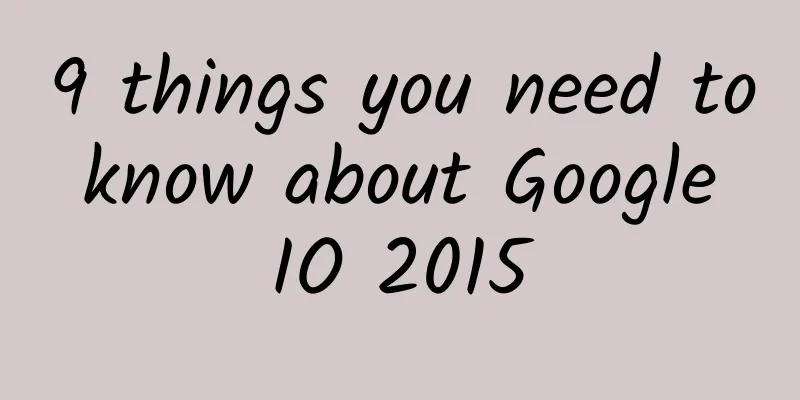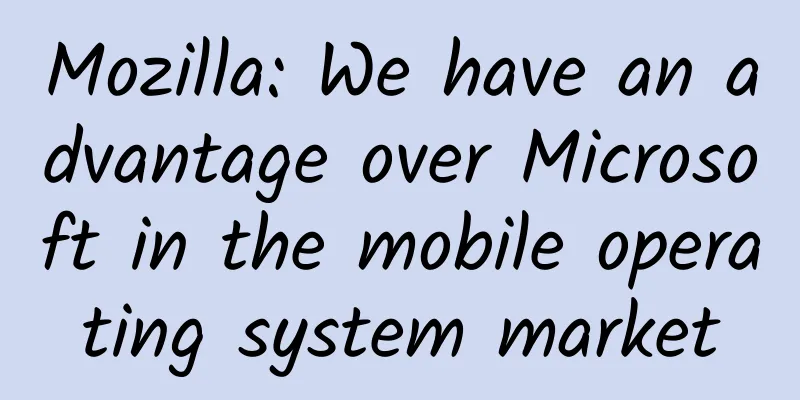9 things you need to know about Google IO 2015

|
1 Google officially releases Android M to improve user experience Today's conference started with Google releasing Android M. The new Android system has greatly improved the user experience, mainly reflected in improvements in App permission management, web experience, App association, Android Pay payment function, fingerprint recognition and battery life. The Android M preview version will be released today, and the first batch of supported devices will include Nexus 5, 6, 9, etc. 2 Android Pay will be officially launched this year Google released Android Pay today. Android Pay is an open platform that supports devices with Android 4.4 or later. Google will build its own official fingerprint recognition support in the latest Android M. It is reported that Google's payment service will be launched in the next few months and will be compatible with early versions of Android phones. In addition, Android Pay does not require a separate application to run. Users can bind their credit cards, debit cards and membership cards to their phones, unlock the device with existing passwords, and make offline payments in more than 700,000 physical stores in the United States. Currently, retailers that have participated in Android Pay include McDonald's, Macys, Best Buy, Walgreens and organic food Whole Foods supermarkets. 3 Google released Brillo, an Android system for IoT that only retains basic kernel functions to ensure minimal consumption Google launched the Brillo system with Android as the core. Brillo is an IoT platform. Brillo is based on Android, so it will be very convenient to pair and set up devices, which means that any Android device can easily connect to and control Brillo smart devices. In addition to Brillo, Google also released the Weave cross-platform protocol, which can connect the cloud, mobile phones and Brillo-supported devices, such as the thermostat of Nest, which was acquired by Google. Brillo will be available in the third quarter of this year, when IoT devices will be able to communicate with mobile phones and the cloud, and all devices will be able to use a unified language. 4. There are already 4,000 Android Wear apps developed, and Uber is the newest member Google announced today that there are now 4,000 apps available on the Android Wear platform, including Uber, Foursquare, and Citymapper. Uber is very important for Android wearable devices. Users only need to say to the Android wearable device: OK, Google, call me a car. At the same time, the Uber driver can get the instruction to go to the user's location to pick up the customer. You can basically see all these new features of Android Wear on LG's new phone Urbane, but when the speaker announced that Android Wear can support users to send emoticons and gesture control, there was still applause at the scene. 5 Google Now combines contextual connections, search, and voice recognition, becoming more and more intimate Google Now has become very smart through years of learning from user behavior. Google Now will be able to answer more questions and more accurately. Its new "now on tap" feature is even more thoughtful. In a specific application, long press the home button to turn on Google Now, and it will provide you with the information you need most on the current interface. For example, when your friend asks you on WeChat if you want to watch "Big Hero 6", Google Now will use this as a basis to provide you with various useful information about the movie, such as its rating, etc. In addition, at the conference, the speaker showed some other practical application scenarios. For example, Google Now can show users the location of the nearest gas station in front of them when they are driving; it can automatically identify the song name and singer when playing a song; it can remind you of unfinished things during the text message process (for example, if your family sends you a message saying "Don't forget to buy apples", Google Now will not only remind you to buy apples, but also give you the nearest apple store and the route to get there). 6 Google Photos will support instant storage and automatic classification Google has released a new photo management app, Google Photos. This app gives users 100% free cloud storage for pictures and videos, can automatically synchronize photos on all devices, and can be managed with gestures on mobile phones and other devices, such as pinch-to-zoom to switch timelines and view photos, which basically makes Google Photos more Apple-like. However, it still has something worth mentioning: Google Photos combines Google's recognition technology to automatically identify people or different events in photos, and can automatically add notes for users without manual work. That is to say, when managing pictures, it can automatically recognize the face of one of your friends, so as to classify all the photos containing him together. Of course, when you search for skiing in Crater Lake, all photos related to skiing will also be gathered together. According to the speaker, this app will be launched later today, and Pingwest will also release relevant reviews to let you know about this app as soon as possible. 7 Google Maps will support offline navigation Google today made another big move in its map function. In order to cater to the needs of developing countries with relatively scarce network resources, Google Maps will support offline navigation. At the same time, the map can support users to view the business hours and reviews of attractions and restaurants offline. 8 Cardboard 3D VR glasses become bigger and can be adapted to iPhones At today's conference, Google announced an update to its VR (virtual reality) product Cardboard. Yes, it's the cardboard virtual wearable device that Google gave to developers at last year's I/O conference. This product is larger than the previous version and can be used on phones with 6-inch screens. At the same time, it supports not only Android phones, but also Apple phones. I used it at the event demonstration area and found that compared with general VR products, the videos I watched were clearer, the colors were brighter, and I didn't feel dizzy. However, although it was easy to install, it was not very stable, and the phone could easily fall out from the side and onto the ground. 9 Google and GoPro jointly develop panoramic shooting machine Jump In order to provide more content for Cardboard glasses, Google launched Jump, a 360-degree panoramic shooting tool. GoPro was invited to join the project. Through the Jump shooting tool and 16 GoPro sports cameras, users can shoot 360 degrees. After Jump correction, the shot video will generate a very realistic 3D video. The staff of the exhibition hall introduced that this product will be officially launched this summer. Users can upload their own 3D videos to Youtube, and other people can watch the VR videos with Cardboard. |
<<: 51CTO Exclusive: In-depth analysis of the mystery of Ctrip’s database crash
>>: As the most user-friendly upgrade in Android history, all the new features of Android M are here
Recommend
The other side of the layoff wave: Don’t want to “roll” anymore, want to be “N+1”
Yuan Dian clearly remembers that the number of pe...
Apple iOS 15 Beta3 Updates: New Safari Search, Apple Music Widget
[[411384]] July 15 news: In the early hours of to...
I have 11 tricks for writing good information flow copy. The last one made the boss laugh~
Writing a copy depends on inspiration for 30% and...
Case: How to use product thinking to carry out fission activities?
In the second half of the Internet , the user div...
Many countries have recently reported high incidence and death cases. The Chinese Embassy reminds you! Beijing CDC: Be alert——
The Mid-Autumn Festival and National Day holidays...
Practical explanation of efficiently adding rounded corners effect on iOS
[[163500]] Rounded corners are a very common visu...
Case analysis: How to play information flow video advertising? Analyzing new video advertising tactics!
In the era of "content consumption", in...
A reusable user growth method
Nowadays, user growth is becoming increasingly di...
[Exclusive] DY Empowerment System Star Course
[Exclusive] DY Empowerment System Star Course Res...
Big-eared Tutu's "ear-moving magic" is actually a kind of atavism!
Audit expert: Wu Xinsheng Deputy Chief Physician,...
Tractica: Autonomous driving industry revenue will reach $35 billion in 2022
199IT original compilation Interest in autonomous...
Floods in the south and droughts in the north, why is the weather so strange this year?
In the past month, heavy rainfall occurred in man...
Being beaten in a dream and waking up with a black eye? Revealing the terrifying interpretation of dreams!
Author: Zhou Fenli, deputy chief physician, Pekin...
More than 1,100 Uber employees jointly wrote a letter asking the board to "return" Kalanick
A few days ago, Uber investors' "forced ...
Why do we talk in our sleep? Is it dangerous to wake up a sleepwalker? The mystery of years has finally been solved
Calculated based on 24 hours a day and an average...









